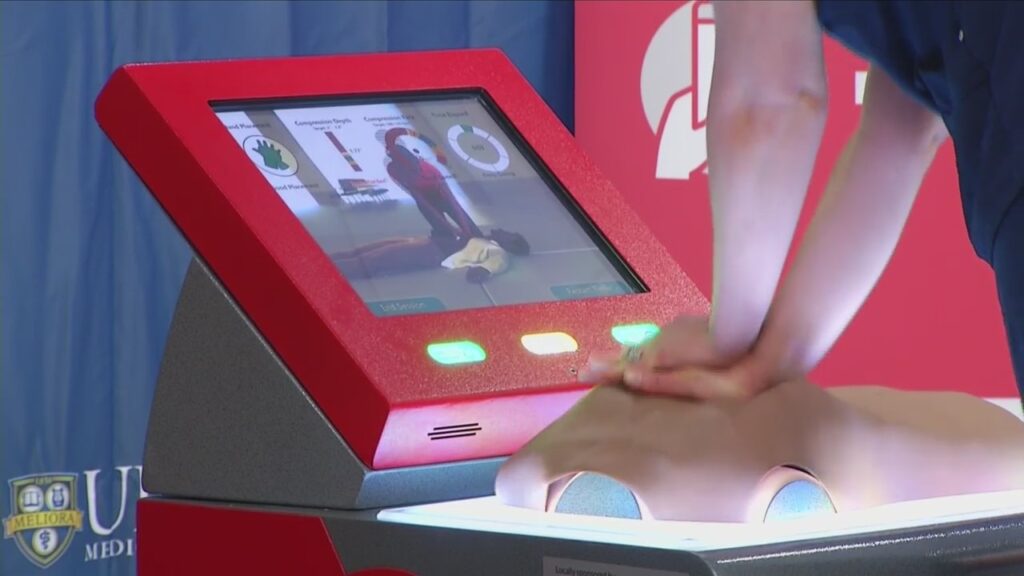New tool aims to get everyone ‘CPR ready’
ROCHESTER, N.Y. – Buffalo Bills safety Damar Hamlin will be at training camp this week at St. John Fisher University – something made possible by the life-saving CPR he received when he suffered a cardiac arrest in Cincinnati during a game.
The scary moment reminded us all of the importance of being CPR ready.
Locally, only 32 percent of people who suffer a cardiac arrest at home receive CPR before first responders arrive. That’s 10 percent lower than the national average.
The odds of someone surviving a cardiac arrest can double when they receive CPR quickly and effectively.
The University of Rochester Medical Center has teamed up with the American Heart Association to change that, launching a new mobile kiosk aimed at teaching as many as possible how to do hands-only CPR the right way.
It’s the second of its kind in the country and the first in New York state. In just five minutes, people can go through a quick and simple training and then take a 30-second test to see how they do.
“It’s very interactive and provides individuals to learn and refresh CPR in a pretty short time,” Stephanie Von Bacho, the University of Rochester’s senior director for learning and development.
She said that children as young as 10 can try it out and help in an emergency.
“It’s the ability to do those fast and deep compressions and CPR is better than no CPR so we would like to have everyone learn how to perform this life-saving skill,” Von Bacho said.
The machine is user friendly and gives tips to help remember how fast and deep the compressions should be.
“Being able to do something in case of an emergency is the most important part because every single minute that you are not performing those compressions diminishes the person’s chance of making a full recovery,” explained Jason Stuib, executive director of the American Heart Association chapter in Rochester.
A normal CPR certification class can take hours. Being mobile gives people the opportunity to learn hands-only CPR quickly and for free.
“We want everyone to feel comfortable, so when you are at the house and some one has a cardiac arrest, when you are at a restaurant, we have an entire community that feels comfortable jumping in,” Stuib said.
